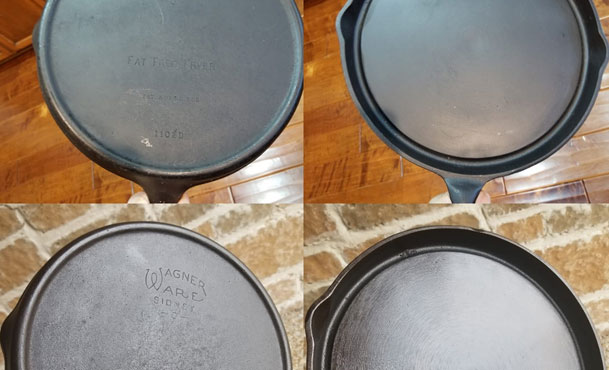
There are many different ways in seasoning cast iron. Some articles however are not very well written articles on seasoning. Most often resulting in sticky and rancid cast iron.
Seasoning cast iron is pretty simplistic after understanding the science behind seasoning. The oil applied to cast iron must reach PAST the smoke point. When smoke points aren't reached, the pan results are less than desirable. When I first started seasoning cast iron, I was aggravated because my pans were gooey. Every oil has a smoke point. This is where the oil essentially burns and starts to smoke. The oil used breaks down and creates a polymerized film on your cast iron. The oil is no longer an oil but a film. The polymerized film creates your non-stick surface.
The best oils to use are those in the higher smoke point range. My favorite oils to choose from are lard, grapeseed, and bacon drippings. For my cast iron, I season a total of three times. I use grapeseed oil first, and in the last two I use bacon drippings. I use a temperature of 425 degrees for two hours.

Below is a step by step process in how I season my cast iron, once I have taken it out of my lye tank.
The picture below is a cast iron piece with lye. I soaked this piece in a lye bath for seven days. I use a tray to place the skillet on, to keep lye from dripping on to the floor.
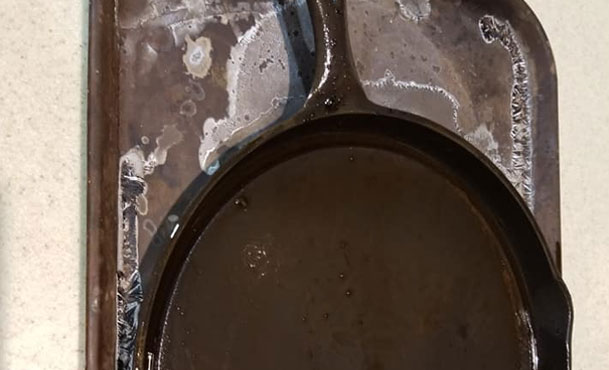
When Cleaning cast iron, I always use Bar Keeper's Friend because it helps to remove loose grime, rust, and black rust. This only pertains to cast iron that has minimal rust damage, not extensive. Using stainless steel pads or S.O.S pad, scrub the pan front and back. Rinse with water. This process needs to be repeated until the water doesn't run pitch black.
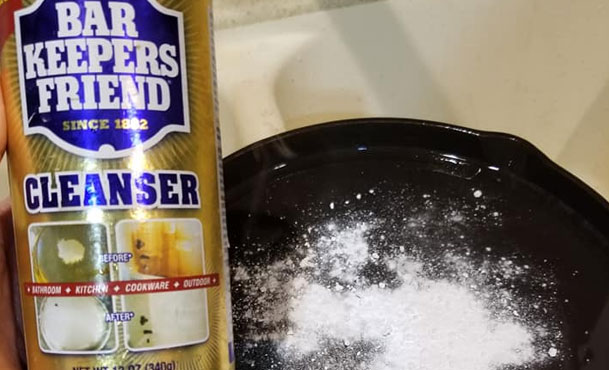
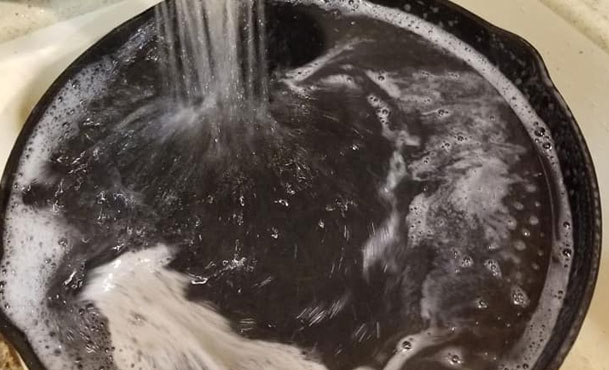
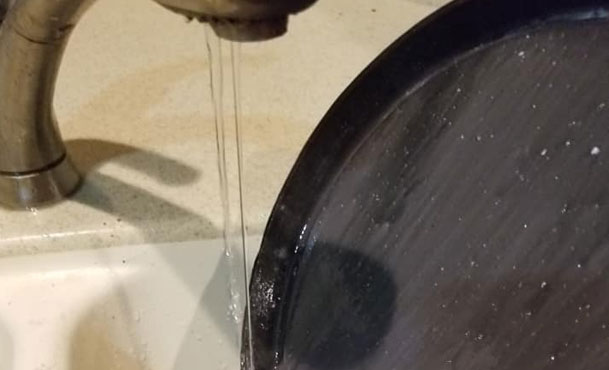
After deep cleaning your cast iron, I use dish soap to wash off Bar Keeper's Friend. This is a personal preference of mine. Soap will not damage your cast iron!
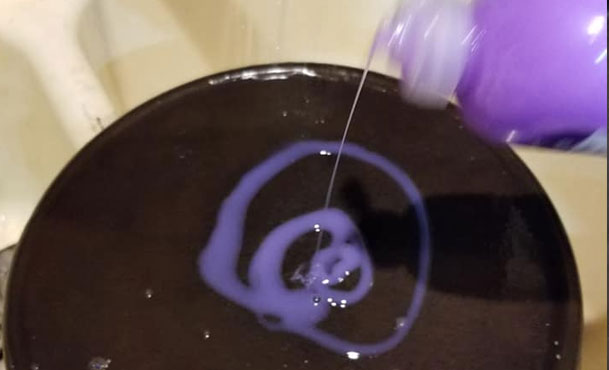
After washing off your cast iron, you need to fully dry your cast iron with rags that you're not going to be afraid to stain.
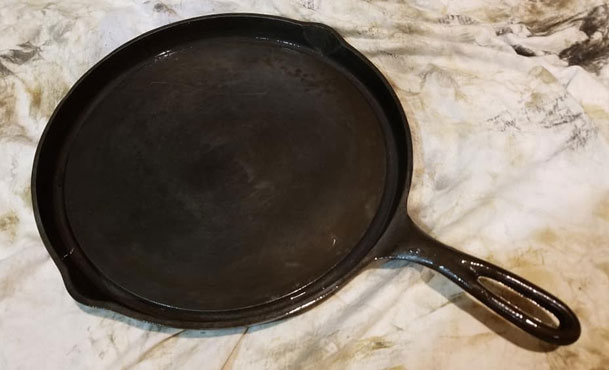
After drying your cast iron, rub your cast iron down with your choice of oil. Don't be surprised if your towel has a black smudge on the back. When iron is down to the bare metal, it's normal to have black residue show up in your water and your rags. After you season your oil the first time, the polymerized surface keeps the residue from rubbing off.
After placing a generous coat of oil on your cast iron, you need to set a timer to 15 minutes. I use this process to catch any areas that I didn't catch when applying the first coat of oil. Naked spots will start to flash rust and turn orange.
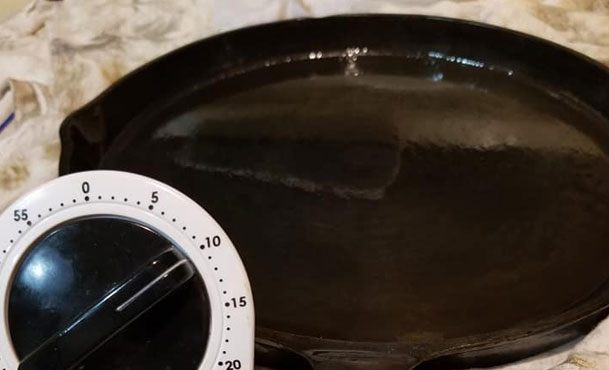
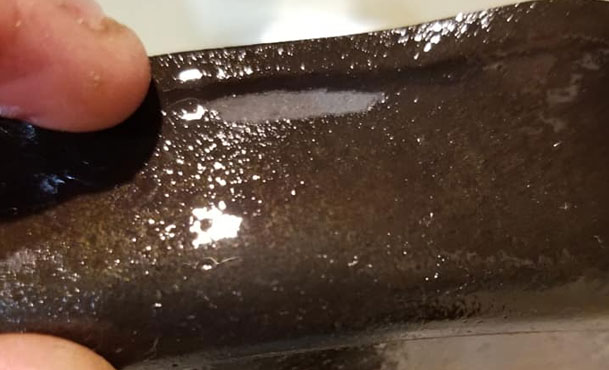
Place the skillet upside down in the oven at 200 degrees for 15 minutes. After 15 minutes, rub the cast iron vigorously with a separate rag. Not the rag you dried the cast iron skillet with. After drying, place the skillet back in the oven and repeat two more times. This method will help to PREVENT sticky spots and bubbles from appearing on your cast iron.
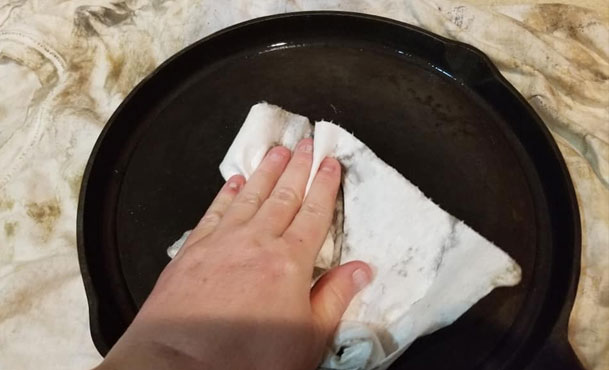
Once this process is completed, place the iron back in the oven and turn the heat up to 425 degrees for 2 hours. The oil will smoke, causing a haze in your home. After the oil reaches the smoke point, the pan will stop smoking. In this process, the excessive heat causes the oil to polymerize. The oil is no longer an oil but a coating. This is why soap will NOT damage your seasoning because it's no longer considered an oil.
After the skillet cools, repeat this process two more times, ONCE a day.
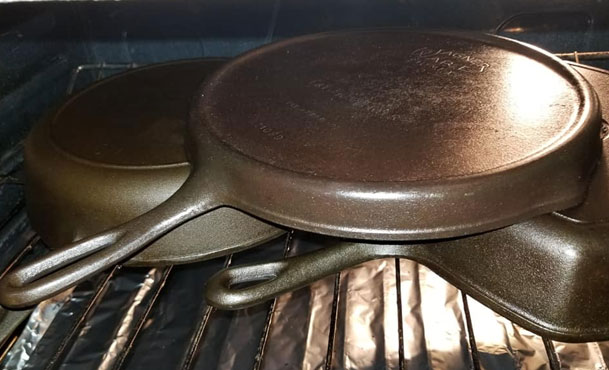
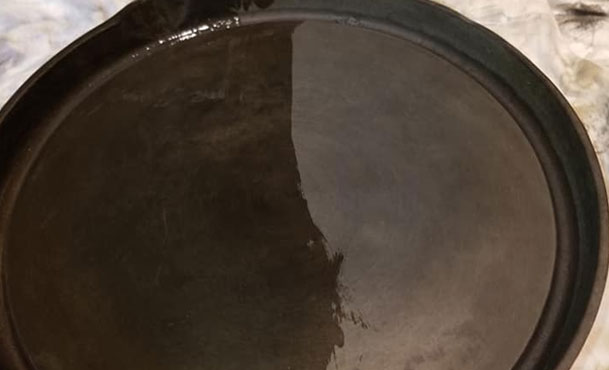
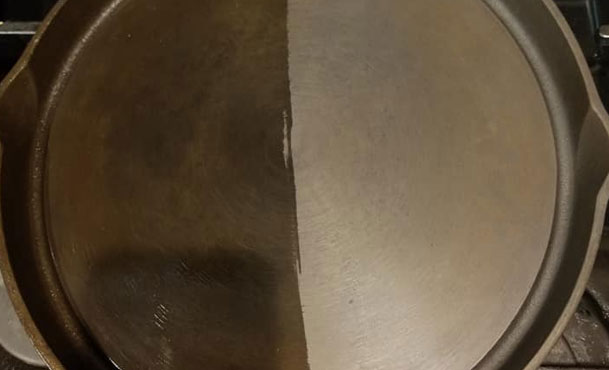
After three rounds of seasonings are applied, your cast iron skillet is ready to use. For a week I used my cast iron skillet to cook bacon. I use this step to create a very slick surface on my cast iron skillet. This will help to prevent food to stick while cooking eggs, and the glossy black shine stands out more.
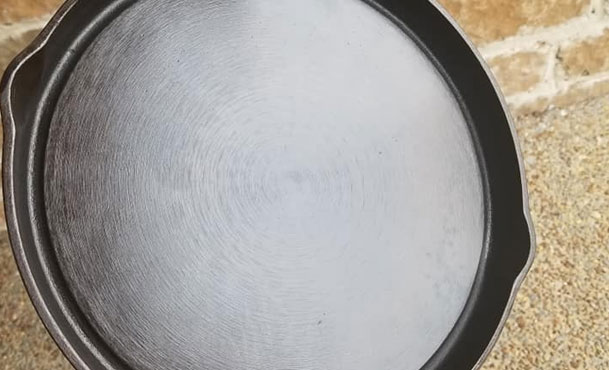
You can click here to see past restoration projects I have done.

Seasoning cast iron only needs to be done ONCE! Not after each use. After you cook a meal, wash your cast iron (you CAN use soap) and wipe off with a dry washrag. Apply oil and wipe off again. Store your cast iron in a dry location and not under a sink.
